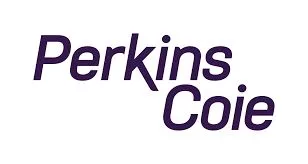- within Family and Matrimonial, Transport and Real Estate and Construction topic(s)
In two recent decisions in Amgen Inc. v. Sanofi, Aventisub LLC, the Federal Circuit has made clear that broad functional patent claims must be fully enabled and underscored the high bar for enablement of broad biological compound claims including functional limitations. Amgen v. Sanofi, Aventisub LLC, 987 F.3d 1080 (Fed. Cir. 2021). On June 21, the Federal Circuit denied Amgen's petition for rehearing en banc, and the original panel authored an opinion responding to Amgen and the amicis' concerns that the court's decision created a new enablement test or eviscerated genus claims. Amgen Inc. v. Sanofi, Aventisub LLC, No. 20-1074, 2021 WL 2525530 (Fed. Cir. June 21, 2021). Patentees claiming biological materials should be aware that "[e]nablement is required, even for generic claims to biological materials[,]" and "as with genus claims to chemical compounds, if they encompass more subject matter than just a few species, they need to be enabled accordingly." Id. at *1. Further, "[b]iological compositions not actually prepared need to be described constructively, if required to enable the full scope of the claims, with procedures and names of resultant compositions, as with chemical compositions." Id.
Amgen's patent claims are directed to monoclonal antibodies that bind to the PCSK9 enzyme and block PCSK9 binding to LDL receptors to lower LDL cholesterol. Amgen, 987 F.3d at 1083. The claims recite that when bound to the enzyme, the claimed antibody binds to one or more of several identified amino acid residues, ultimately blocking the enzyme's ability to bind to the LDL receptor. Id. An exemplary claim recites:
- An isolated monoclonal antibody, wherein, when bound to PCSK9, the monoclonal antibody binds to at least one of the following residues: S153, I154, P155, R194, D238, A239, I369, S372, D374, C375, T377, C378, F379, V380, or S381 of SEQ ID NO:3, and wherein the monoclonal antibody blocks binding of PCSK9 to LDLR.
Id.
A jury twice found Amgen's claims enabled, but the district court granted Sanofi's motion for judgment as a matter of law ("JMOL") that the claims were not enabled, due to the breadth of the claims and their functional nature. Id. at 1083-84, 1086.
The Federal Circuit affirmed the district court's grant of JMOL, instructing that for biological claims that include functional requirements, courts must look to the breadth of the functionality, especially in unpredictable fields or where the patent includes less instruction on how to make the invention. Id. at 1086. The Federal Circuit cautioned that "[w]hile functional claim limitations are not necessarily precluded in claims that meet the enablement requirement, such limitations pose high hurdles in fulfilling the enablement requirement for claims with broad functional language." Id. at 1087. The Court noted that the antibody claims at issue in the appeal were defined by their function: binding to combinations of sites (residues) on the PCSK9 protein and blocking the PCSK9/LDLR interaction. Id. Applying the Wands factors, the Federal Circuit affirmed the district court's findings that Amgen's claims were broad-particularly, broader in functional diversity than the disclosed examples-the field was unpredictable, the specification's guidance and working examples were not directed to the full scope of the claims, and significant experimentation would be necessary to make other embodiments within the claim scope. Id. at 1084, 1087-88 (citing In re Wands, 858 F.2d 731 (Fed. Cir. 1988)).
In its original opinion, the panel briefly addressed Amgen's concern that the court's decision would overrule Wands, ultimately disagreeing, reasoning that the facts evidenced a vast range of potential embodiments outside the disclosed antibody examples that could meet the claims' functional limitations. Id. at 1088. Amgen petitioned for rehearing en banc, and with the Federal Circuit's denial, the panel issued a decision reiterating that it did not create a new test for enablement, but instead followed the longstanding requirement that genus claims must be enabled by a disclosure commensurate in scope to the claim scope. Amgen, 2021 WL 2525530, at *1. The Court explained that the purpose of the enablement requirement is to prevent patentees from claiming a broad genus that they have not invented, reasoning that claims to a non-enabled genus would suppress innovation. Id. at *2. The Court did note that functional claim limitations render it particularly difficult to ascertain whether a species falls within the scope of a genus claim, explaining the high bar for enablement of claims including these limitations. Id. at *3.
The Federal Circuit denied that its opinion spelled the death of genus claims, asserting that biological genus claims could be allowable if examples across the full scope of the claim are disclosed either actually or constructively. Id. at *1. In its opinion, the Court explained that, "as with chemical compositions," patentees should constructively describe claimed biological compositions across the claim scope "with procedures and names of resultant compositions" when the claims reach beyond compounds actually reduced to practice, although the Court did not explain concretely what would constitute an adequate constructive description of an antibody claim. Id.
The content of this article is intended to provide a general guide to the subject matter. Specialist advice should be sought about your specific circumstances.


